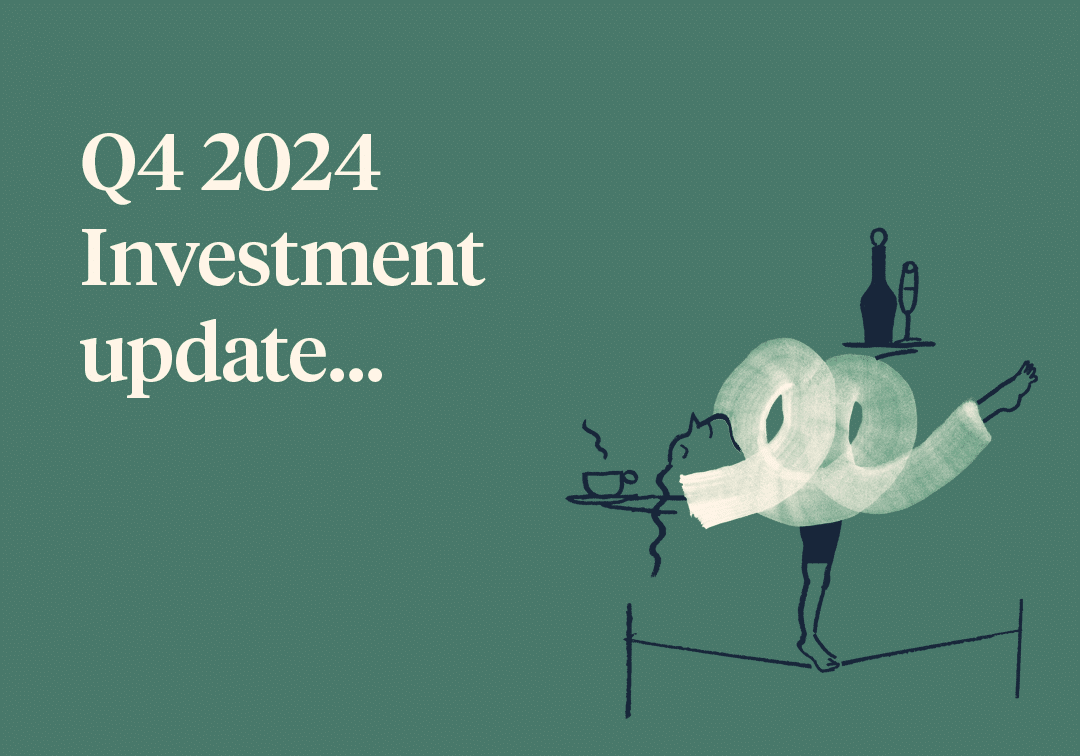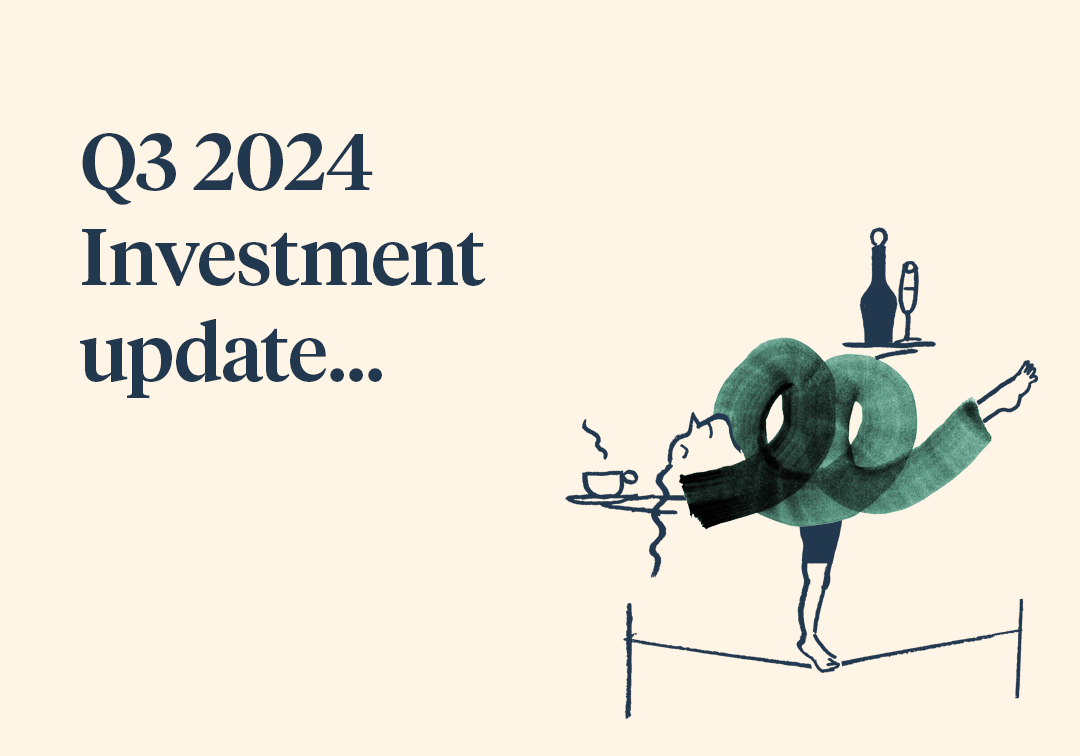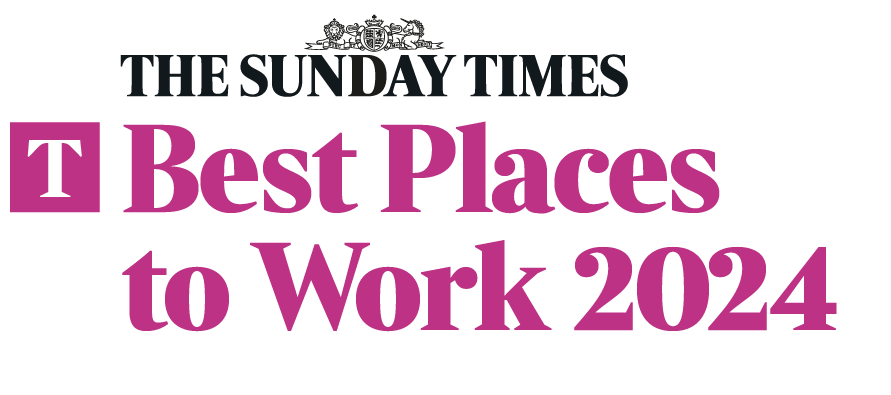Transcript
Jordan Gillies:
Hello and welcome to our Q3 2023 update. My name’s Jordan Gillies, I’m one of the partners here at Saltus and I’m once again joined by Mike Stimpson from our investment team.
So, Mike, it’s been a really interesting quarter. We for some time have, obviously, as with everyone else, been quite concerned about inflation and particularly the disconnect between the bond market and Central Banks, who have been really holding back some risk. And it’s been quite a volatile period for the bond market in particular, which I know can be a little bit challenging for people to get their heads around. So, it’d be really good if you could just give us a little bit about what has actually happened in the quarter just to set the scene.
Michael Stimpson:
Sure. So, until August, broadly things continued much as they have through 2023 so far. Equities continued to make some progress and things were okay. And then, in September, really the moment of reckoning has arrived, and, by the moment of reckoning, I mean the question of whether to conquer inflation we’re going to need a recession, a big recession, or not. And really what’s happened is there’s been a mini panic in government bond markets, particularly in the US where the selloff in government bonds has accelerated. And it really started because of some longer-term issues that have been around for a while, but the market hasn’t really been focusing on.
So, in US government bonds, there’s both a supply issue in terms of too much supply, because the US now has large fiscal deficits and expected fiscal deficits of over 6% going off forever. And, also, a demand issue where the traditional buyers of these government bonds, the Chinese, the Saudi Arabians and the Japanese, aren’t buying in China and Saudi Arabia for geopolitical reasons and, in Japan, because of a relative value trade. So, Japanese bonds in their home currency are looking more attractive. So, this has all been happening for quite some time, but it became the focus following the Fed meeting where medium-term projections were higher interest rates for longer and maybe even interest rate rises from here. And we had what’s known as a “hawkish hold” where interest rates didn’t rise, but there were very stern words and that’s led to the market really focusing on this issue and a significant selloff in bond markets, particularly at the longer end of the curve.
Jordan Gillies:
And so, Mike, does that mean things are looking a little bit worse in the US than here in England or is it just that they have a greater impact on the global economy?
Michael Stimpson:
Well, they certainly do have a greater impact on the global economy, and, in the UK, it was slightly different. We had a better-than-expected inflation number in September, which allowed the Bank of England to have a more “dovish hold”. So, interest rates still stayed the same, but the wording was more around we can sort of wait and see, and certainly gave the expectation that interest rates could be cut if they needed to be. And I think what we should focus on is that this has been what we’ve been worried about for some time, for the last six months we’ve been saying there’s a disconnect between the bond market and Central Bank expectations. And, really, now that’s come to pass and so we’re sort of right in the eye of the storm at the moment.
Jordan Gillies:
So, on that, Mike, I know for some time we were looking at those long duration government bonds and thinking that they’re quite well valued as well. So, how have we approached that being concerned about the storm that’s coming, but also looking to take opportunity? What have we actually been doing?
Michael Stimpson:
It’s a good question, Jordan. So, from starting from a very low base of no duration in the portfolios at the beginning of this year, we’ve been slowly buying into weakness. And in the last quarter, as those bonds have fallen further, we’ve continued to buy, which means at the margins we are showing some losses on a short-term basis. But on a one-year view, we think these are really good investments.
Jordan Gillies:
And is that having an impact on our alternative position then as well? I know a lot of the time, because we’ve not been holding those bonds, we’ve had a high increase to our alternative strategy. So, what have we been doing around those?
Michael Stimpson:
So, we’ve been gently increasing our alternative strategies as well. Alternative strategies which benefit from volatility, so our convertible bond arbitrage managers or our long short managers in both equities and bonds.
The other thing that we’ve done is, in lower risk portfolios, we’ve hedged our currency positions. And the reason for that is because, in a low-risk portfolio where you’re expecting to make those lower returns, we just can’t afford to take the risk of a significant currency swing knocking a percent or two off returns. And so, those have all come out of the lower risk portfolios, but we’ve maintained the currency positions in the higher risk portfolios.
Jordan Gillies:
Okay, fantastic. And look, appreciate as well, our Asset Allocation Committee is next week so we can expect a bit more news from them and we’ll also send a full writeup on the output of that Committee to our clients as well.
So, Mike, that’s kind of set the scene and given us an idea about what we’ve been doing in the portfolios. You mentioned being in the eye of the storm, so what’s the kind of outlook from here? I know that might be a bit of a challenging question, but what can people expect to happen over the coming months?
Michael Stimpson:
Sure. I think when I said eye of the storm, we’re probably through the eye of the storm with the eye of the storm being where it’s calm and we’re sort of a bit rocky. Again, I think we’ve had a very significant move. We’ve had a two standard deviation move in bond markets. That is a big move, which usually results in quite a sharp reverse or at least a quick reverse. And we need to wait and see whether that happens.
There’s lots of debate at the moment about where we are in the business cycle, with some commentators saying we’re at the end and interest rates are going to get cut. Some think interest rates are going up. So, it really is quite unclear and it’s likely to stay that way for the next four, six weeks or so as we wait for the data to come through and tell us which way we’re going to go. And either we’re going to be in a position where real yields, where the bond market stays, where they are today or they’re going to continue to rise and we’re going to be in significant recession territory. And, in that environment, it becomes much more difficult for investments across the board.
On the other hand, we could see a softer inflation number in the US like we did in the UK and that would calm markets again, and we all sort of muddle through. But, today, we are holding back from our risk budgets as we wait for the data to give us more clarity on direction.
Jordan Gillies:
So, really, right now it’s really challenging to say and so we’re kind of holding our horses until we’ve got a clearer direction.
Alright, well look, thanks Mike. That’s been really helpful. No doubt our next quarterly update will be a really interesting one based on what you’ve said today. Thanks so much for joining us again, and we’ll look forward to seeing you at our next one.
Do you need help managing your investments?
Our team can recommend an investment strategy to meet your financial objectives and give you peace of mind that your investments are in good hands. Get in touch to discuss how we can help you.

Article sources
Editorial policy
All authors have considerable industry expertise and specific knowledge on any given topic. All pieces are reviewed by an additional qualified financial specialist to ensure objectivity and accuracy to the best of our ability. All reviewer’s qualifications are from leading industry bodies. Where possible we use primary sources to support our work. These can include white papers, government sources and data, original reports and interviews or articles from other industry experts. We also reference research from other reputable financial planning and investment management firms where appropriate.
The views expressed in this article are those of the Saltus Asset Management team. These typically relate to the core Saltus portfolios. We aim to implement our views across all Saltus strategies, but we must work within each portfolio’s specific objectives and restrictions. This means our views can be implemented more comprehensively in some mandates than others. If your funds are not within a Saltus portfolio and you would like more information, please get in touch with your adviser. Saltus Asset Management is a trading name of Saltus Partners LLP which is authorised and regulated by the Financial Conduct Authority. Information is correct to the best of our understanding as at the date of publication. Nothing within this content is intended as, or can be relied upon, as financial advice. Capital is at risk. You may get back less than you invested. Tax rules may change and the value of tax reliefs depends on your individual circumstances.
Related blog posts
About Saltus?
Find out more about our award-winning wealth management services…
Winner
Investment Performance: Cautious Portfolios
Winner
Top 100 Fund Selectors 2024
Winner
Best Places to Work 2024
Winner
Best Financial Advisers to Work For
£8bn+
assets under advice
20
years working with clients
350+
employees
97%
client retention rate





